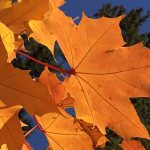Greenhouse Gas Emissions Inventory from Construction of WSDOT Roadways
|
Recent emphasis on actions to reduce large-scale greenhouse gas (GHG) emissions has pushed most state departments of transportation to develop strategies to mitigate the adverse environmental impacts of the materials that they utilize. To assist WSDOT, researchers at the UW Carbon Leadership Forum assessed and analyzed the GHG emissions of WSDOT’s current material practices and explored opportunities to decrease them. ... Read More about Greenhouse Gas Emissions Inventory from Construction of WSDOT Roadways | |









